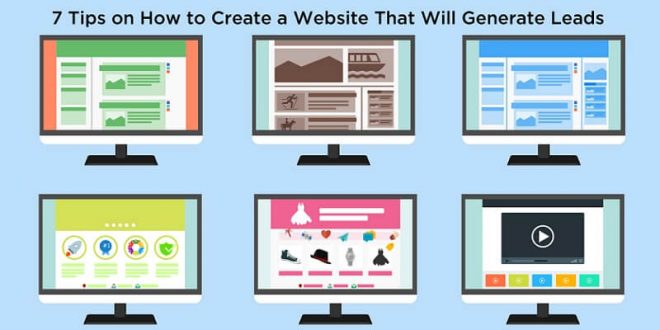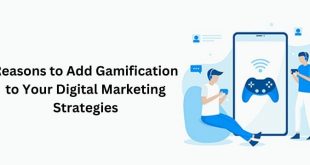Hey guys, today in this article, we are going to discuss the 7 tips on how to create a website that will generate leads. So keep reading.
Creating websites is integral for any business looking to succeed in the current markets. A website helps a business increase revenue. This is done by gaining new leads and generating demand for the products or services offered by the brand.
Often used interchangeably, the terms lead generation and demand generation are not the same. Many marketing personnel uses the terms interchangeably because they contribute to a business’s sales process. However, one must be able to differentiate lead generation vs demand generation.
In the past, business websites only served as information sources for clients and potentials. However, well-developed websites can significantly help your marketing team generate more leads.
In a study, 4 in 5 clients said that the experience created by a business is as vital as its services and products. The experience provided by a brand also factors into the website experience. This means that corporations ought to ramp up their websites to generate leads. In this article, we highlight tips on how to create a website that will help your business generate leads.

7 Tips On How To Create A Website That Will Generate Leads:
1. Bespoke Designing For The Website
A website significantly impacts how a client, lead, or potential perceives a website. With this in mind, a client must not perceive your business as cheap or using a website design that resembles that of others.
For businesses, having a bespoke website design helps in lead generation. When potentials visit your website and find its design generic and poor functionality, they immediately leave.
When consulting with your web designer of choice, you must inform them that you want a bespoke website for the business. A bespoke website design entails having unique menu layouts, images, lists, etc.
When creating a bespoke website, the images impact its overall outcome and user experience. Instead of using royalty-free images found online, hire a professional photographer to take high-quality photos for the site. The photos can be those of products or portray the services the business offers.
Once the photos are captured and edited, the website designer has to ensure that they are compressed. Compression of images on websites reduces the time taken to load the site. However, when compressing the images, the designer must ensure they do not compromise the picture quality. Well-compressed photos ensure the website loading times are low for leads, thereby improving the user experience. This makes them more inclined to submit their contact information.
2. Website Optimization
In the early days of the internet, 100% of internet traffic was from computers. However, with the evolution of computing devices, we have new devices used to access the internet. Currently, 62% of internet traffic comes from mobiles. Considering the numerous devices that are used to access websites, a business must optimize its site for each device.
If a potential client visits your site and finds the mobile experience is poor, they will leave. To counter this, websites are optimized with different views to work on different device types.
Website optimization for various device sizes entails changing the positioning and size of website features. The most important items to check when optimizing a site are the drop-down lists, images, buttons, and forms.
You should also consider the interaction method when optimizing your website for use on different devices. On computers, users use pointing devices to navigate websites. This does not apply to devices that support touch input or other input types. Adapt the website to effectively work with whichever input type to ensure you generate more leads from your site.
3. Call To Action Button
Once the website’s basic structure is developed to generate leads, one now focuses on the specific functions. Marketers use a call-to-action (CTA) button to guide website visitors on their next course of action.
Though they seem simple to develop, many factors go into designing a call-to-action button to offer impressive results. The first factor to consider when designing a CTA is that it should be short. CTAs have to be short and emotion-provoking. This will attract the attention of the website visitor easily.
To ensure the click-through rate (CTR) is high, the CTA should use actionable verbs for their wording. Actionable verbs offer direction and invoke the visitor to take action. Actionable verbs for CTAs that perform well include:
- Buy now
- Register now
- Purchase them today
When designing a call-to-action button, it is vital to trigger FOMO (Fear of Missing Out). It has been noted that CTAs which portray a sense of urgency for something have a CTR higher than regular CTAs. Use terms such as now and limited offer to portray a sense of urgency and invoke FOMO in visitors. Modifying a regular CTA, such as buy now to buy now for a 50% discount, will offer better results.
Finally, you should tailor your CTA button to the visitor’s device. CTAs that are not optimized according to the device will offer a bad user experience, thereby affecting the CTA’s performance.
4. Website Chatbots
Chatbots have revolutionized how prospects, leads, or clients communicate with businesses. When a potential lands on your brand website, they expect to get impeccable assistance for any request. However, manual customer assistance methods cannot work with high website visitor numbers.
Chatbots are AI-powered systems that simulate human conversations. Chatbots use natural language processing capabilities to understand client questions and reply effectively. When developing your business’s website, implementing a chatbot into it will help generate leads.
In a business website, a chatbot can help guide a potential through the business’s catalog and eventually make a purchase. Chatbots can also be used to gather vital visitor data to use to communicate with the lead.
Fundamentally, using chatbots on websites aims to improve the satisfaction rates of website visitors. The end goal of this is to convert the new leads into clients eventually.
5. Blogging
Offering potential clients or leads relevant information is important to gain their favor. Using blog posts on business websites has significantly helped draw traffic and generate business leads.
Different formats can be used to develop blog posts depending on the products or services a business offers. Businesses that sell products can post blogs on how clients can use their products. Businesses can also go a step further and post about other products that can be used in conjunction with their products for a better experience. If, for instance, a cell service business offers data plans, they can post an article such as “How to Change Your Data Plan.”
Businesses that offer services to clients can post blogs about the necessity of their services, how they offer them, etc.
6. Gated Content
While blog posts are good for gaining website visitors and gaining leads, their efficiency is often low. This is because some people search for specific topics, and finding it discussed on your website does not mean they want to purchase.
Gated content helps improve the efficiency of blog posts on a business website. Gated content is website content that requires one to have filled out a form or created a user account. Besides this, Gated content helps a business gain information about potential clients who are interested in their products or services.
Once a business gets a hold of potential client data, it can employ its sales strategy. The sales strategy aims at converting a lead into a business customer. Other than blog posts, gated content can exist in numerous formats.
Businesses with websites can opt to post one content type being free to view and another requiring one to sign up. An excellent example of this is the offering of free-to-read blog posts, then video or voice manuals have restricted access.
When using gated content to generate leads, it is vital to ensure you strike a perfect balance between the amount of gated and free content. Attaining a balance between these two helps ensure that website visitors do not view the business as one that is data-hungry.
7. Visitor Profiling
The use of data to gain knowledge and insights about website visitors can also be used to gain business leads. Profiling entails knowing the behavioral traits of a site visitor based on their time and actions on the business website.
Once a business is aware of the visitor’s behavior, the business can curate and deploy a different lead capture process. This helps increase the efficiency of various processes for capturing website leads depending on the visitor’s profile.
Conclusion
While using websites to generate business leads is at the backbone of the success stories of many businesses, you have to be patient. When establishing your business website, it will take a while to understand the various visitors and know what website features work best.
This means that a business should constantly evaluate lead capture features on sites. When evaluating, businesses should improve the features progressively to increase the site’s success rate in lead generation. I hope you like this article on how to create a website that will generate leads.
Author Bio:
Daniel Martin has hands-on experience in digital marketing since 2007. He has been building teams and coaching others to foster innovation and solve real-time problems. Dan also enjoys photography and traveling.
 free html design Free html design templates
free html design Free html design templates






